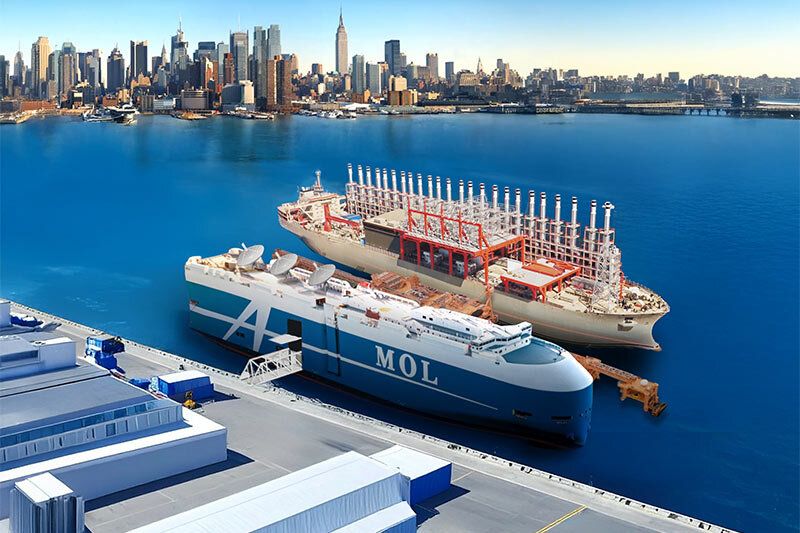
Marine data centers: floating, submerged, and more efficient
Marine data centers, both floating and submarine, are emerging as a sustainable alternative to reduce energy consumption, improve efficiency, and bring processing closer to coastal areas.

The data center boom
The demand for data centers for processing and storage continues to grow. The recent wave of multibillion-dollar investments in artificial intelligence (AI) in the United States confirms this: OpenAI, Oracle, and Softbank have announced the construction of five new AI complexes in the United States under the Stargate platform, with a promised investment of $500 billion. An increasingly digitalized economy needs these giant structures, not just for Artificial Intelligence, but also for Big Data, the Internet of Things, Cloud Computing...
While megacomplexes are being built on land in the United States that will consume as much energy as entire cities, Europe and Asia are exploring more sustainable alternatives. Digital Realty is preparing a data supercenter in Sant Adrià de Besòs (Barcelona), which is emerging as the main digital hub in southern Europe, as it will be strategically located next to the Barcelona Cable Landing Station (CLS). And Aragon has more than 20 planned data centers between Zaragoza and Huesca.
- But the question always is: how can we meet this growing demand while reducing the enormous energy consumption needed to cool servers?
Over the past five years, an idea has been forming to improve efficiency in this regard: building these digital infrastructures at sea. Until recently it might have sounded like science fiction, but the last five years have established it as a real and viable alternative.
Like all technological innovations, these maritime data centers—whether surface or submarine—represent a series of technical and regulatory challenges that must be considered to determine to what extent they are a future solution.
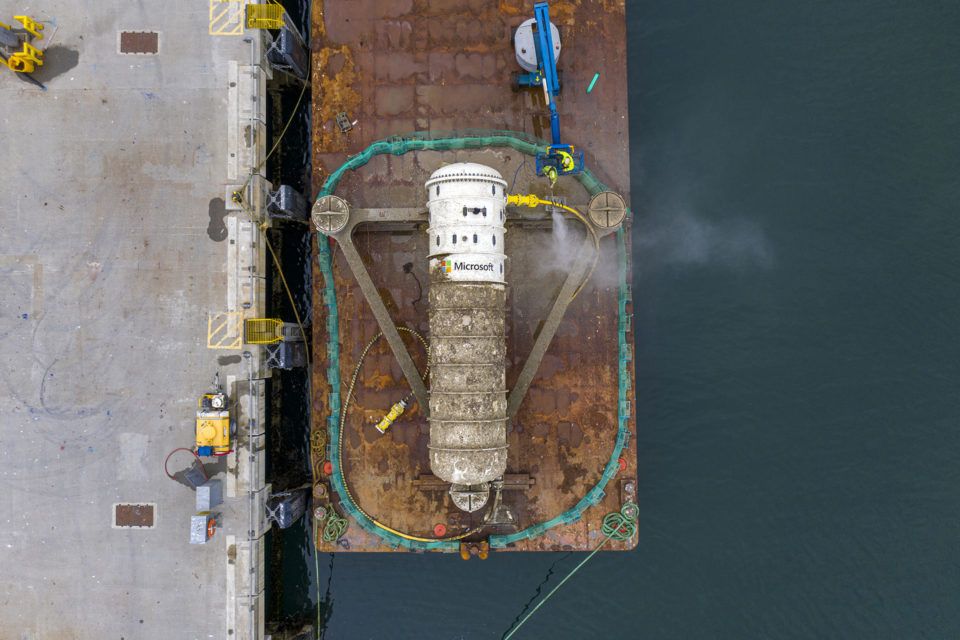
Maritime data centers: a short but intense history
The origins of these data centers at sea can be traced back a decade. In 2015, a digital technology leader like Microsoft launched Project Natick, which sought to verify the viability of operating data centers in maritime depths. The objective was to check whether this location could offer better cooling, lower energy consumption, and greater reliability.
Theory turned to practice by submerging a data center with 864 servers in the waters of the Scottish Orkney archipelago. Five years after Project Natick began, in 2020, they certified it was viable. The cold, oxygen-free, and stable environment of the seabed reduced corrosion and problems from high temperatures. Additionally, they had used renewable energy from installations near the coast.
In 2024, Microsoft announced it would not continue with the project—its purpose was experimental and not commercial, it had always been considered for a limited timeframe—but considered the acquired experience very useful for the future and would apply these lessons learned from Natick.
It soon became clear that this Microsoft experiment would not be an island.
- In 2022, Nautilus Nautilus Data Technologies installed a data center in Stockton (California). In this case it was floating and they combined water use with heat exchangers to achieve greater cooling efficiency, with the promise of being 70% more efficient than a land-based data center and consuming 30% less energy.
- As in so many other fields, there are also reference projects in Asia. The Chinese company HiCloud has promoted submarine data centers on the coasts of Lingshui, in the island province of Hainan, focused on supercomputing tasks and AI services. In summer 2025, HiCloud presented a similar project in waters near Shanghai with the intention of having a data center with 24 MW capacity in two phases. They also expected to reduce energy consumption between 30 and 40% thanks to using marine wind energy.
- Meanwhile, Japan is studying installing data centers on ships or other types of sailing structures. In this case, we need to look at the near future. The shipping company MOL (Mitsui O.S.K Lines) and the company Kinetics want to launch in 2027 a vessel with data management capacity between 23 and 73 MW. For cooling, they will also use renewable sources generated on a powership estimated to be about 120 meters long, according to data provided by MOL itself.
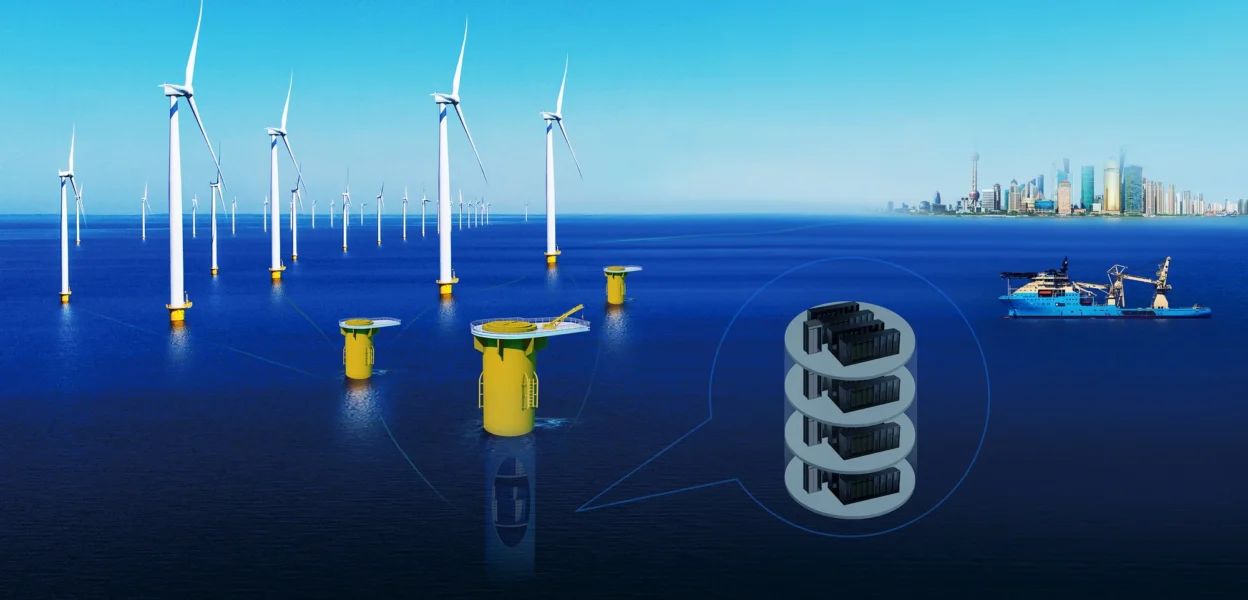
Why take a data center to sea?
As already noted, and was the main finding of Microsoft's study, ocean and sea water is much more stable and lower than temperatures on land, making it easier to dissipate heat generated by servers without depending so much on active cooling systems. By getting the surrounding water to absorb heat, energy consumption to complete cooling is reduced very significantly.
- By reducing temperature more efficiently, the failure rate is also reduced. Again we must turn to Project Natick as a reference, which verified that submerged servers had 8 times fewer problems than a similarly capable center located on land.
In the case of submarine centers, environmental variations—waves, wind currents, night-day temperature changes...—have less influence and it's not necessary to design energy compensation systems like land-based centers. Floating ones may be more exposed in this sense, but have other advantages like their ability to relocate if necessary to face a peak in data processing demand.
Key points
- Marine water offers constant natural cooling, which drastically reduces server energy consumption. Submarine data centers register 8 times fewer failures than terrestrial ones thanks to the stable sea temperature, which also minimizes environmental variations. Floating data centers add flexibility because they can be relocated according to demand.
- If these marine data centers are installed in ports next to cities with very high data demand, they help reduce latency and increase their effectiveness.
Efficiency and latency reduction
Operational efficiency is also a point in favor of these data centers. Here we need to look at the Shanghai project, a global metropolis where there is great data demand. By locating these facilities so close, improvements are obtained such as reduced latency when using certain applications, data is processed faster, and other digital services will perform better in users' eyes.
From an energy perspective, and like their terrestrial counterparts, a data center not only needs energy to cool itself but also to operate its other functions: server use, communications equipment, auxiliary systems... This is where bringing energy (or other options) to the infrastructure comes into play.
In this regard,, José Luís Domínguez García, head of offshore wind at Institut de Recerca en Energia de Catalunya (IREC), tells PierNext that if you have a very powerful data center "it's probably better that, instead of bringing energy from land, you have your own generation." Domínguez recalls that in the aquatic environment there are available renewables such as offshore wind, wave or tidal power.
Para el experto del IREC, «la energía eólica aporta muchas ventajas hoy en día a estos centros de datos: tienes parques muy grandes que aportan mucha energía y que puede aprovecharse para alimentar estos data center».
For the IREC expert, "wind energy brings many advantages today to these data centers: you have very large farms that provide a lot of energy that can be used to power these data centers."
Domínguez adds that "if you're looking for a place to build one of these infrastructures, better where there's an offshore wind farm, because it's already an anthropized area, it's a limited zone and isn't used for other things."
An important point for choosing one source or another, Domínguez indicates, is that "you have to consider that data centers require a constant amount of energy, they can't work by disconnecting a part if there isn't enough energy like other infrastructures, so you must consider that you might need a very important nearby generation capacity."
A final aspect this expert explains, connectivity, "is an important factor, we must be sure that not only energy arrives, but also fiber optic cables so data can be transmitted."
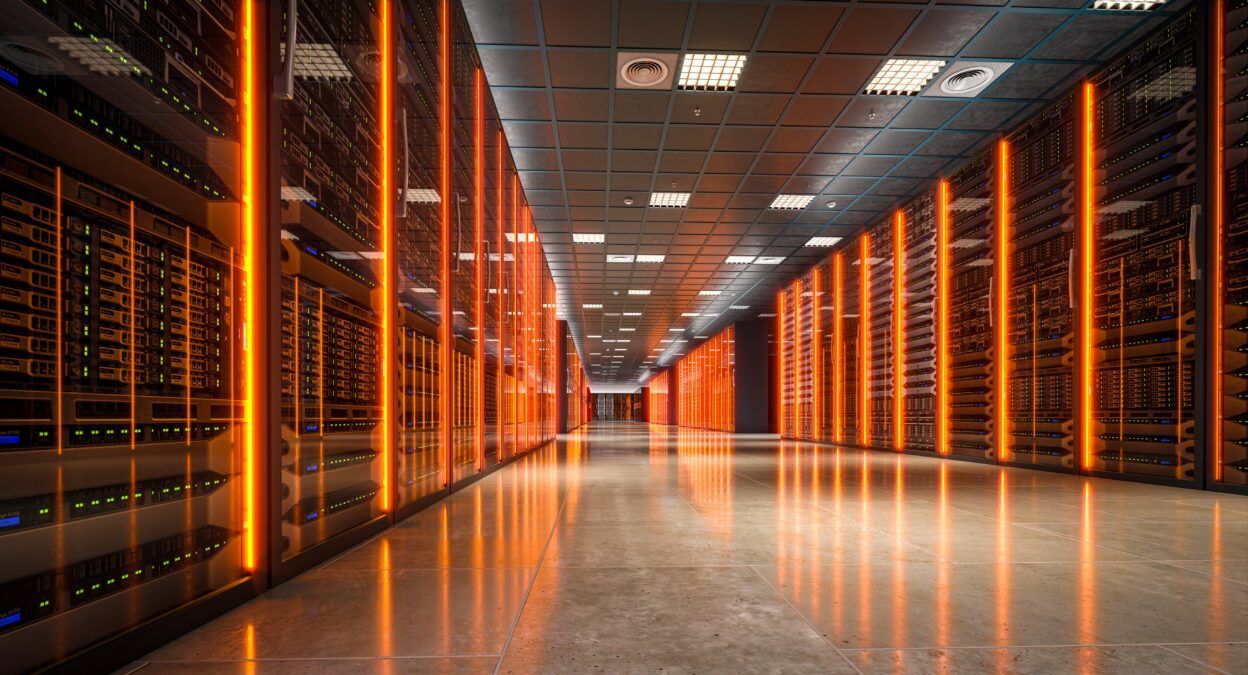
Data centers in ports?
The marine data center projects carried out to date have been built in varied maritime areas: small archipelagos, near a global reference port, under the sea...
- But for the IREC head, the best areas to install a data center should be "as close as possible to the coast to facilitate connections (data or energy, if self-generation isn't chosen). For example, ports are areas with human presence for some time and it's easier to develop new infrastructures and areas where there are autonomous resources to generate necessary energy."
In the specific case of the Iberian Peninsula, being between the Atlantic Ocean and the Mediterranean Sea presents a duality worth highlighting. Data center efficiency in the second environment may be more moderate because Mediterranean water temperature is higher. Although there are other points in favor of Spanish coasts, such as the notable use of marine renewable energies that could be integrated into hypothetical future centers of this type.
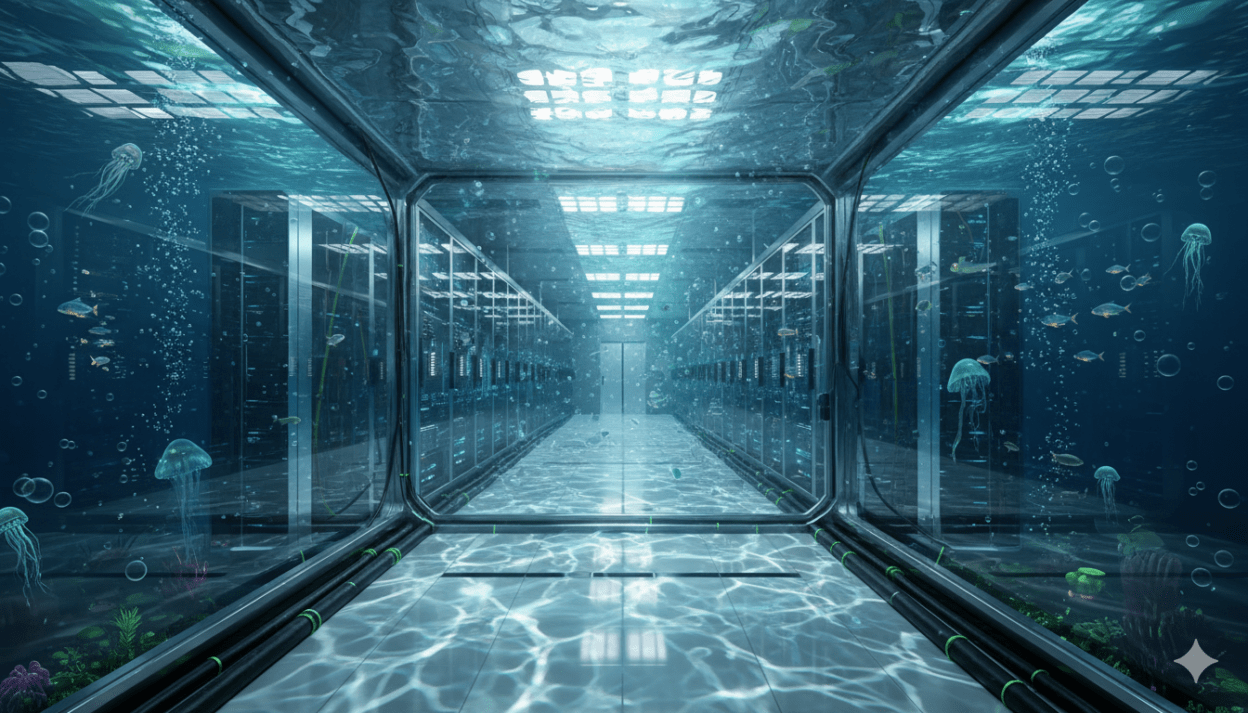
Challenges of marine data centers
If the submarine environment provides obvious advantages from a cooling perspective, it also carries some risks for all types of structures such as corrosion or fouling from algae and other marine organisms. Therefore, structures housing these data centers need to be very well designed especially to resist pressure, humidity, thermal cycles...
In relation to this point, any maintenance task is more complicated underwater, it can even become complicated if equipment is brought to the surface or land to be repaired. The development of drones and underwater robots is helping a lot in this regard and surely important advances will also be seen in the near future.
Environmental risks to maritime ecosystems is a very present issue in developing any project in these aquatic environments, so these projects must be very respectful of corresponding environmental legislation, wherever they are developed. The presence of these infrastructures can alter currents and other aspects of a coastal ecosystem.
"Using a heat exchanger must be done carefully because you can heat sea water and affect the life around it," Domínguez emphasizes, so he recommends better acting in areas like ports or where there has long been human presence so as not to affect more virgin ecosystems as much.
- Maritime data centers represent an innovative solution to the growing energy challenge of the digital sector. With consumption reductions of up to 70% and eight times fewer technical failures than their terrestrial equivalents, these projects demonstrate that the future of digital infrastructure may be at sea.
Ports and coastal areas near offshore wind farms emerge as ideal locations, combining cooling efficiency, renewable energies, and connectivity.
In the Iberian Peninsula, with its strategic position between ocean and Mediterranean, this technology could integrate perfectly with the growing data center infrastructure that is already transforming the region into a European digital hub.



